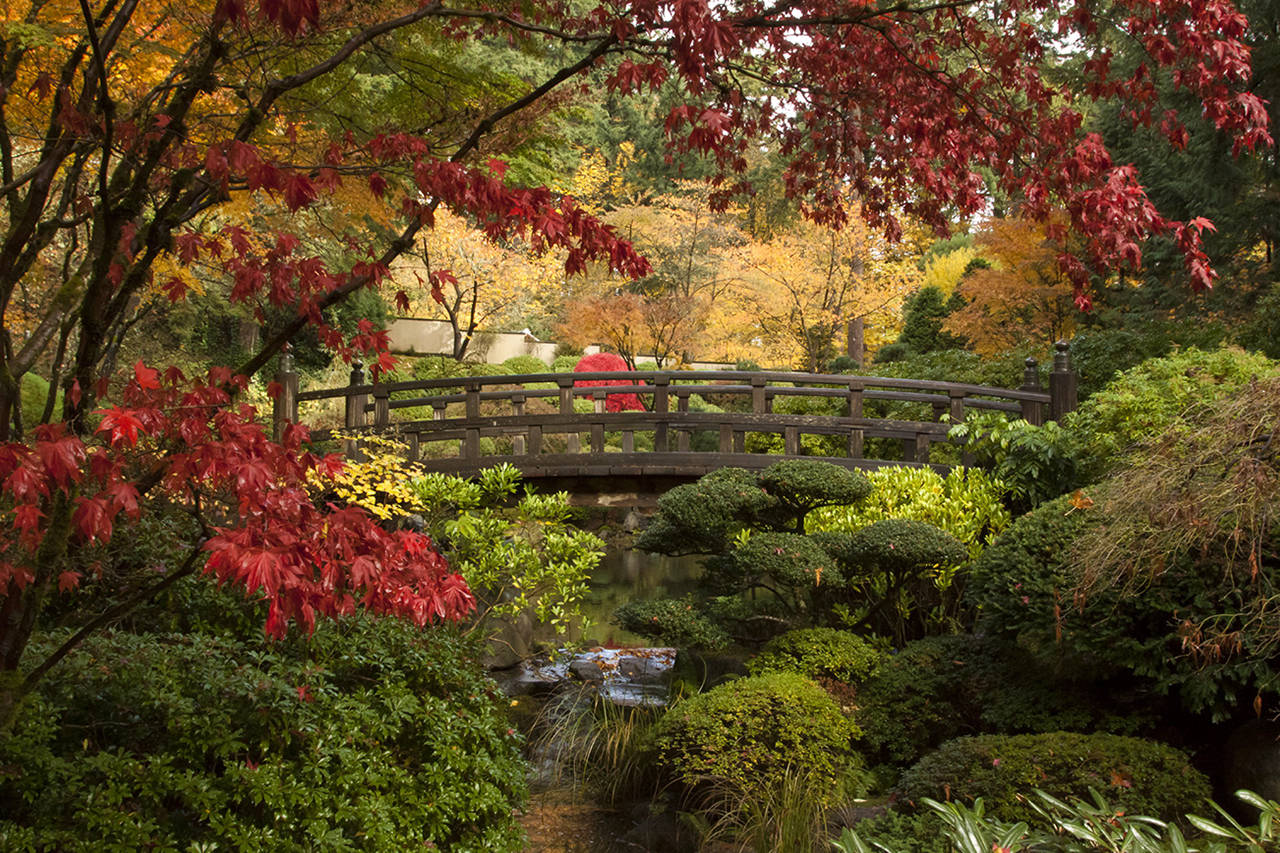By Katie Lutz
WSU Master Gardener
Fall is my favorite time of year, simply because of the ethereal beauty presented by the changing colors of the leaves — particularly the leaves of maple trees, and the delightful crunch you hear when you walk on them.
One of the best places to view this spectacle is the Japanese Garden in Portland, Oregon. Before I get to that, though, let’s take a look at the development of this amazing style of gardening.
Formal Japanese gardening practices stretch back into the Asuka period (~538-710 Current Era), when merchants, diplomatic delegations and travelers began returning from China with various writings and art objects. Some of the writings focused on detailed descriptions of new gardening techniques and styles. Additionally, one of the biggest influences on early Japanese gardening philosophy was the introduction of Buddhism from China. This all being said, early Japanese gardening was also heavily influenced by local Shinto practices and philosophy.
Japanese and Chinese gardens share some significant features. Typically, you will see a water element with fish, rock hardscaping, bridges and other small structures (which often employ an element of concealment), and careful selection and deliberate placement of symbolic plants.
In the early years, Japanese gardens were more or less duplicates of their Chinese counterparts. However, Japanese gardening in the Heian period (794-1185 CE) began to develop their own unique aesthetic principles, including a focus on miniaturization of idealized natural landscapes, the concealment and reveal of landscapes one section at a time (similar to a scroll unrolling), a “borrowing” of surrounding landscape elements, and asymmetry.
By the Edo period (1615-1867 CE), the influence of these aesthetic principles made Japanese gardening fully distinct from Chinese gardening. This manifested in four important ways (and many smaller ways too). First, architecture became simpler and buildings were mostly concealed away from the water feature. Second, Japanese gardens were designed to be viewed from the outside rather than from inside a building. Third, rocks were smaller, more natural in shape and better integrated into the landscape. Finally, Japanese gardens used marine landscape elements with white sand and pebbles rather than design elements from lakes.
Japanese gardens aren’t limited to one exact style. There are many different types, and some of the most popular are rock gardens and tea gardens. Rock gardens are designed for meditation and influenced by Zen Buddhist philosophies. As I mentioned earlier, they also feature design elements of the Japanese coast. Tea gardens act as a complement to the formal Japanese tea ceremony. The focus is on meditation, so typically you will only see green landscape plants, because bright flowers might distract from the purpose of this garden space.
English-speaking audiences were finally introduced to Japanese gardening by Josiah Conder when he published “Landscape Gardening in Japan” in 1893.
This brings us to the Portland Japanese Garden, which has its origins in the 1950s. Members of the Portland community sought to build the garden for two reasons: to create a beautiful and serene green space; and to help heal and build cultural understanding with Japan after World War II. The site, the former location of the Washington Park Zoo, was dedicated in 1961 and finally opened in 1967.
The garden recently celebrated the grand opening of its new Cultural Village, which includes the Japanese Arts Learning Center, Garden House and Umami Café. Kengo Kuma, architect of the National Stadium for the 2020 Tokyo Games, designed the new village.
Open year-round, the garden features five different styles of Japanese gardens and offers weekly cultural programs for visitors. It’s a truly wonderful place to visit.
Katie Lutz, from Hoquiam, joined the WSU Master Gardener Program in 2016.
* * *
Overview of Japanese garden history: en.wikipedia.org/wiki/Japanese_garden
More about the Portland Japanese Garden: japanesegarden.org
* * *
Interested in joining the WSU Master Gardener Program? Applications for the Class of 2018 are available now at pnwmg.org.


